-
Posts
1,543 -
Joined
-
Last visited
-
Days Won
9
Content Type
Profiles
Forums
Blogs
Gallery
Events
Store
Everything posted by archie777
-
King’s South Africa medal two clasps: South Africa 1901 & South Africa 1902 (Capt. S.H. Chapin. D.S.O. S.A.L.H.) Naming impressed on original rim. Sydney Herbert Chapin was clearly an interesting individual. He was the son of a New York surgeon and is reported to have served as a transport officer on General Buller’s staff during the Anglo Boer War. In his younger days he was purportedly called “Slick Sydney” during his military services. Having been appointed as a Member of the Distinguished Service Order for “meritorious services” on 29 November 1900 this award was revoked towards the end of the Great War (London Gazette, September 24, 1918) – His Majesty the King directing that “his name shall be erased from the Register of the Order.” An earlier Gazette had reporting that he “is dismissed by sentence of a General Court-Martial. 23rd May 1918.” Clearly a recipient worthy of much research. The well-known Anglo Boer War Forum website records the following: “Sidney Chapin was born in New York, USA, in 1875. In 1895, Chapin travelled to Rhodesia, where he joined the Matebele Mounted Police. During March 1896, he was attached to Coopes Scouts as part of the Matebele Relief Force. Afterwards, he joined the French Foreign Legion and was sent to Athens, taking part in the Battle of Pharsala. During 1897, he took part in Queen Victoria's Diamond Jubilee with the Rhodesian Forces. Chapin then returned to Rhodesia, where he joined the British South Africa Police. In September 1899, he enlisted in the South African Light Horse as a Trooper and was shortly promoted to Regimental Quartermaster Sergeant. After the Relief of Ladysmith, he received a commission as Lieutenant, and four months later, was promoted to Captain. He saw considerable action with the South African Light Horse. He received the Distinguished Service Order and stated in a letter that to the best of his knowledge, he was the first American citizen to receive it. After the Boer War, Chapin became a Sub-Inspector with the Criminal Investigation Department of the South African Government Railways. He next served as Adjutant of the British Contingent with the company that brought General Piet Cronje to the Saint Louis Exposition in 1904. Chapin then took a position with the Department of Immigration in Guatemala. He next served for five years as Assistant Commissioner of Police and Superintendent of Prisons, Gold Coast, West Africa. He was appointed Lieutenant in the 4th Royal Irish Dragoon Guards in 1914 being wounded in September 1915 and promoted Temporary Captain in February 1916. Chapin was then promoted Temporary Major and transferred to the 17th Battalion Liverpool Regiment in December, 1916. He was dismissed from the service after a Court-Martial on May 23 1918. He died in London in September 1952. Major Chapin was Mentioned In Despatches (General Buller's Despatch, June 19, 1900), “S. Chapin has done invaluable service throughout the campaign,” and again (Lord Robert's Dispatch, April 2, 1901), “For meritorious services.” He was awarded the Distinguished Service Order (London Gazette, April 19, 1901). Chapin had the Distinguished Service Order revoked (LondonGazette, September 24, 1918). He is not listed in the DSO book. Some accounts suggest he was involved in the Jameson Raid but there is no evidence to support this.”
-
This unique Presentation Jewel measures approximately 160 mm x 65 mm and weighs 97,63 grams. The surrounding wreath on the lower portion is stamped “C.G. Braxmarco 14K” the marking of Charles George Braxmar of New York who is well known today as “The Badgeman”. Obverse Description: hanging from an ornate gold top suspender broach which boldly sets out his name as “Col F.E. Fillis” the central jewel comprised an inverted horseshoe with his initials elaborately intertwined in the centre the ornate circular lower disc depicting the fine image of a rodeo horseman surrounded by a wreath, the reverse of this “medallion” being engraved as follows: PRESENTED TO COL. FRANK E. FILLIS BY MEMBERS OF THE BOER WAR SPECTACLE AT BRIGHTON BEACH NEW YORK U.S.A. AS A token of regard and esteem JULY 13. 1905 Francis Edward Fillis was born in Lambeth, London on 13 July 1857. After the death of his first wife he married Eliza Mayol in 1880 and she later became known as Madame Fillis. Having moved to Southern Africa he first established a circus in 1879 and soon became South Africa's greatest and best known circus proprietor of the late 19th and early 20th century, presenting spectacular shows in late Victorian and Edwardian Cape Town, Johannesburg and Kimberley. His circus was generally known as Frank Fillis's Circus, or simply Fillis' Circus. Always promoting dramatic real-life shows, he opened a "magnificent new building" in Johannesburg in 1889 which was capable of holding 2,500 patrons for which he spared neither "pains nor money". The two Boswell brothers, who later opened their own circus company, were among his top acts. Frank himself became a highly talented horseman and animal trainer and a choreographer of epic spectacles. In addition to entertaining crowds throughout Southern Africa, his 100-member strong company also toured the colonies and settler societies of Australia, New Zealand, Indonesia, Singapore, Sri Lanka and India, however his greatest shows of all, for which he is especially remembered today as the ultimate showman, were the epic spectacles he produced in London in 1899 and at the St Louis World’s Fair in 1904. His “historical”and military reconstruction show in London titled “Savage South Africa” were re-enactments of the Matabele Wars of 1893 and 1896 for which several hundred native African people were imported. He followed this in St Louis in 1904 where his Anglo Boer War Spectacle employed veteran soldiers and officers from both sides to recreate some of the major battles of 1899-1902. Years before he had staged an episode from the Zulu War in Australia in 1893 but there were no greater shows than those which he presented in America in 1904 and 1905. His shows were, understandably, not without considerable political controversy. Frank died while on tour the Far East on 18 November, 1921 and is buried in the Jewish cemetery in Bangkok, Thailand. In 1998 Floris Van der Merwe published a 95 page booklet titled “Die Boere-Sirkus van St Louis (1904)” (The Boer-Circus of St Louis) in which he recorded the full story of Edward Fillis and the various shows of which he was the “Managing Director”. The story and the events which led in the presentation of this unique ornate gold presentation jewel may be briefly summarised as follows: - The World’s Fair, held in Forest Park in St Louis in 1904 commemorated the centenary of the Louisiana Territorial purchase from Napoleon which almost doubled the land area of the young American Republic. The Exposition was received by the public with much acclaim and was judged as being the greatest of all shows. It was in this event that a certain Captain Arthur Smith decided to include and stage a special Boer War exhibition and he persuaded Frank Fillis to manage the undertaking. To achieve this an independent South African Boer War Exhibition Company was formed. Edward Fillis assembled the necessary equipment, collecting batteries of artillery, numerous guns and ox-waggons etc and engaged a company of about 50 Basutos. Some 300 Boer veterans, many of whom later received the Anglo Boere Oorlog medalje, signed on as the “actors’, their number including several officers most notably Veg Generaal Ben Viljoen and General Piet Cronjé. Similarly, a theatrical contingent of 250 British, colonial, Australian and Canadian veterans of the recent war in South Africawere also drawn in. The show arena for the “Anglo Boer War Historical Libretto” covered 10 acres. Three distinct scenes were played out - firstly the Battle of Colenso, secondly the Battle of Paardeberg and the surrender of General Cronjé and thirdly General De Wet’s escape. In choreographing the extravaganza, Edward even trained many of hundreds of horses engaged in the show to fall down during the staged fighting and to remain still until the end of the scene! Vast numbers of spectators watched the show, the popularity of St Louis at that time being enhanced due to the concurrent holding of the Olympic Games in that city. Eric Rosenthal in an article published in the well known South African Afrikaans magazine recorded that some two million people watched the show! Following the displays at St Louis the “Show” now dubbed “The War” moved to Chicago for a period of six weeks whereafter it moved to New York at the end of January 1905 where it was held at Coney Island situated in the South Brooklyn Borough of New York City. Brighton Beach as noted in the engraving on this presentation jewel was an amusement resort in the middle of Coney Island. The enactment stage crafted by Edward Fillis is still considered to be one of the greatest, if not the greatest staged spectacle ever at Coney Island having been performed on a patch of swampland between Manhattan Beach and Brighton Beach. To express their appreciation to him the Members of the Boer War Spectacle presented him with this massive 14ct gold jewel memento in July 1905. From the photographs included in a simple booklet titled “Photographic Views of the Boer War Spectacle” published in St Louis at that time it is clear that the image of the horseman depicted on the obverse of this gold jewel is of Edward Fillis himself, riding his horse named Povero. The archive includes a copy of Van der Merwe’s booklet, various contemporary St Louis advertising programmes and published photographs, Eric Rosenthal’s Huisgenoot article, various other maps and photographs and a “One dollar, Ladies Ticket” for the “Grand Military Masquerade” “Reception and Ball” held at the Coliseum in Chicago on Saturday 19 November 1904.
-
QSA 3 bars: Defence of Ladysmith, Transvaal, Laing’s Nek, 255 Corpl. R. Hesom Natal Carbnrs.; QSA one bar: Natal Guide R. Hesom F.I.D.; 1915-15 Star Lt R. Hesom S.A.S.C.T.&R.; BWM; AVM (bilingual) Lt R. Hesom.; Queen Victoria Diamond Jubilee Medal (bronze) The second QSA skimmed and officially re-impressed, a rare double issue of the QSA. Ex City Coins Lot 541, Auction 59 Nov 2009. Robert Hesom, who was named after his uncle, was born in Dundee Natal. Son of George Thomas Hesom on 13 October 1873. The “Natal Who's Who 1906” page 91 details his biography- King's, Queen’s, and Diamond Jubilee medals. Assistant Manager, Geo. North, and Son, Maritzburg. Married 22 July 1905, Ida Constance Bowen, of Bilston, Staffordshire. Educated Maritzburg College. Hobby: small patents. Won 1st prize for the smartest turn out in N.C 1896. Represented same Regiment at the Diamond Jubilee. Elected Squadron Leader, 1st Reserves, 1906. Address 307 Prince Alfred Street, Maritzburg. Robert Hesom was part of the Natal Carbineer contingent and rode behind Queen Victoria’s carriage on the occasion of her Silver Jubilee. While in England, he met his future wife, Ida. Her father, Bernard Maxim ‘Benny’ Bowen (born Bilston, Staffordshire in 1864), had been in 3rd Dragoon Guards but immigrated to Natal and became Regimental Sergeant Major of the Natal Carbineers in 1896. Robert Hesom served in the Natal Carbineers during the Boer War. Present during the siege of Ladysmith he took part in the successful attack on Gun Hill on the night of 7/8 December 1899. According to Sir George White's despatches: “On the night of the 7th.December, Major General Sir A. Hunter, K.C.B., D.S.O., made a sortie for the purpose of destroying the Boer guns on Gun Hill, which had been giving us much annoyance.” A wellresearched group.
-
Distinguished Service Order, G.V.R. (silver-gilt and enamel), - complete with top bar; Queen’s South Africa 1899-1902, 6 bars, Cape Colony, Talana, Defence of Ladysmith, Orange Free State, Transvaal, Laing’s Nek Lieut., “A” Bty. R.H.A.; 1914-15 Star Major, R.F.A.; BWM; AVM (unilingual) and M.I.D. oakleaf Lt. Col. Mounted court style for wear, cleaned. Ex DNW 15 December 2011 Lot ʋ 1044. D.S.O. London Gazette 4 June 1917. M.I.D. London Gazette 10 September 1901; 1 January 1916; 4 January 1917; 18 May 1917; 20 December 1918; 5 July 1919. Osmond Charteris Du Port was born on 9 July 1875. He was educated at Harrow School and the Royal Military Academy. He was commissioned on 2 November 1895. He served in the Boer War in Natal from 1899, including the actions at Talana and Lombard’s Kop and during the siege of Ladysmith where he was slightly wounded. He next served in operations in Natal, March to June 1900, including the action at Laing’s Nek, operations in Transvaal, east of Pretoria, June to November 1900, including the action at Lydenberg. For his services he was mentioned in despatches and awarded the QSA with 6 clasps. During the Great War he served in France and Flanders, from 31 May 1915 to 11 November 1918 and was in command of 35th Brigade RFA between 11 March 1916 and 4 February 1917. He was five times mentioned in despatches, awarded the DSO, and received the brevet of Lieutenant Colonel on 3 June 1919. At the end of the War, he was appointed Lieutenant Colonel in the Reserve of Officers on 2 May 1919. Afterwards he farmed in Southern Rhodesia, was a member of the legislative Assembly of Southern Rhodesia, 1924 to 1928 and a Minister of Agriculture and Lands 1927 to 1928. He died on 21 June 1929.
-
Asst. V. Kornet. B. J. de L. Badenhorst. Barend Jacobus de Lange Badenhorst was born 8 May 1865 in Wakkerstroom. He was married with nine children and was the Field Cornet for Wijk, 4 Vryheid Commando. He took part in the battles at Talana, Ladysmith, Modderspruit, and Spioenkop. He died on 24th Jan 1900 at age 34 during the battle of Spioenkop where according to Jacobus Albertus van Rooyen, Badenhorst was killed at his side being hit in the forehead.
-
Assistant Veldkornet Jacobus Johannes van Biljon served in the Frankfort Kommando from 2 October 1899 till taken P.o.W. on 9 May 1902. He was in action at Platrand near Ladysmith, Natal, at Winburg, OFS and many others in OFS and the Cape. He was wounded in action on 27 February 1902. On the night of 22 February, De Wet and his men reached the Cornelis River and Commandant Manie Botha, and his Vrede Commando joined them. Botha told them of the British force sweeping in a line from the Wilge to the Drakensberg. They were thus in danger of being trapped against the Bethlehem-Harrismith blockhouse line. The British sweep caused a wide variety of people to flee and join up with De Wet and his commandos. Amongst them were two Boer commandants, Alexander Ross and his men from Frankfort and Hendrik Alberts and some men from Heidelberg. The ribbons of the DTD and ABO medal were switched
-
Distinguished Conduct Medal (Edward VII) E. P. Robinson Natal Guides; British South Africa Company’s Medal 1890-97, reverse Rhodesia 1896, no bar Troopr. E.P. Robinson, “F” Troop B. F. F.; QSA 5 bars Talana, Defence of Ladysmith, Orange Free State, Laing’s Nek, Belfast E. P. Robinson Natal Guides; 1914-15 Star Lt. E.P. Robinson Hartigans Hse.; BWM; AVM (bilingual) Lt E.P. Robinson. ROBINSON, Edward Albert Perciville “Digger” D.C.M., J.P (1873 to 1955) Trooper. ''F '' troop – Bulawayo Field Force; guide (honorary sergeant) – Natal Guides; sergeant – lieutenant – 4th D.M.R. (Southern Rifles); lieutenant – No. 2 troop, "A" squadron, Hartigan's Horse; lieutenant – South African Native Labour Corps. Medal entitlement: Distinguished Conduct Medal Edward VII. Named to E.P. Robinson, Natal Guides. London Gazette of 27 September 1901. 2 096 Distinguished Conduct Medals were awarded during the Boer War, of which 9 were awarded to the Natal Guides. Mentioned in Despatches by Sir George White (London Gazette 08 February 1901) – “I would Specifically elude to the work done by the Corps of Guides - these gentlemen rendered the greatest possible assistance. Foremost in every fight, always ready to undertake difficult or dangerous duties, they helped me equally in field operations, with Supply and Transport, and in dealing with the Dutch inhabitants ... I must mention Mr. F. Knight; the brothers Loxton; the brothers Alison; the brothers Whipp; the brothers Robinson…” Percy's brother George Robinson was a Trooper in the Colonial Scouts. Percy Robinson was mentioned in despatches again by Lord Roberts on 4 September 1901 (London Gazette dated 10 September 1901) and awarded the Distinguished Conduct Medal. Natal Guides. Messrs. A.F. Henderson, W.A. Knight, T.J.M. Macfarlane, W.M. Struben, A.B. Allison, M. Allison, G.G. Godson, S. Loxton, T. Loxton, E.P. Robinson, A. Russell, C.S. Whipp, R.T. Whipp. The family believed that he was awarded his D.C.M. for operating behind enemy lines prior to the battle of Talana. However, the citation is not specific on this point. B.S.A. COMPANY MEDAL reverse ''RHODESIA 1896 Trooper, "F" Troop, Bulawayo Field Force (under Captain Dawson). Named to P. Robinson both on the medal and Roll. According to Ian Johnstone, information contained in the Zimbabwe Archives indicates that Robinson applied for his medal in May 1902 to the Governor of Natal and again in August – this time to the Military Secretary, Cape Town. The medal was presented to him at the family farm Ellerton. Riet Vlei, Mooi River on 22 May 1903. Percy Robinson was the nephew of Sir John Robinson K.C.M.G, the first Prime Minister of Natal. He was born on the farm Ellerton. It is uncertain exactly when Robinson went to Rhodesia. While there, he contracted malaria, so his Native servants carried him on an improvised pole stretcher for 130 miles to seek treatment in Bulawayo. He was prospecting in Matabeleland at the time of the uprising in 1896, and consequently saw active service with the Bulawayo Field Force for some 2½ months before he was forced to return home because of a “family bereavement”. In his application for his BSA Company medal Robinson stated that his discharge papers, as well as newspaper cuttings of his exploits in Rhodesia, had been looted when the Boers took Dundee at the beginning of the Boer War in October 1899. Frederick Courteney Selous in Sunshine and Storm in Rhodesia page 96 mentions that two small patrols were sent out from the Shangani laager on Thursday 26 March 1896 in an attempt to ascertain the whereabouts of settlers with whom they had lost contact. ‘Mr. Mowbray Farquhar and two companions visited a mine where a white man was known to have been working a day or two previously, whilst the other, consisting of Mr. Robinson and two others, visited the Pongo Store and the Eagle Mine. A careful search was made ... all round the store. and the bodies of two out of three men who had been murdered there two days previously were discovered and covered with blankets' They failed to find the third corpse as it was lying some distance from the store. In support of his application for his medal Robinson stated that he was attached to Col. Hon. Maurice Gifford on all his first expeditions and at Shiloh. His work was acknowledged by Captain Lumsden before Lumsden was mortally wounded at Fonseca's farm on 6 April 1896. “The patrol under Lieutenant Colonel Gifford - now commonly known as the Shiloh Patrol consisted of Gifford's Horse, with thirty-one men of “F” Troop under Captain Dawson, and eleven men of Grey’s Scouts under Lieutenant F. Crewe - one hundred and eighteen Europeans in all, with one Maxim gun and forty-nine Colonial Boys under Captain Bisset. Captain J. W. Lumsden accompanied the patrol as Chief of Staff and second in command.” The patrol under Lieutenant Colonel Gifford - now commonly known as the Shiloh Patrol consisted of Gifford's Horse, with thirty-one men of “F” Troop under Captain Dawson, and eleven men of Grey’s Scouts under Lieutenant F. Crewe - one hundred and eighteen Europeans in all, with one Maxim gun and forty-nine Colonial Boys under Captain Bisset. Captain J. W. Lumsden accompanied the patrol as Chief of Staff and second in command.” The patrol left Bulawayo on Saturday morning, 4 April. Colonel Gilford obtained information that a body of the enemy was to be found on Holm's farm on the Umguza. The column was attacked by two or three hundred Matabele: “coming down from a ridge on our right, and the rear-guard – “B” Troop under Captain Fynn - were soon engaged with them… Col. Gifford sent back Captain Dawson's troop and the Colonial Boys to support Captain Fynn, and after about an hour's heavy firing the Matabele withdrew into the hills close by. In the meantime, the rest of the column had drawn out into an open space and laagered up. The next morning ... our advance guard, “A” Troop under Captain Meikle, were attacked, and at the same time a party of two or three hundred came down on our right and attacked the column”. The attacking force was reluctant to close, having to first cross the Umguza River under Maxim fire. In the meantime, “A” Troop had beaten off the attack on the advance guard, and the retreating warriors were mauled by Captain Bisset’s Troop, resulting in 20 or so casualties. The column then made its way to Fonseca’s farm and laagered. The following day, a scouting patrol under Lieutenant Rorke opened fire on an impi but were forced to retire under heavy pressure. Col. Gifford ordered Captain Dawson's troop out in support. The main body took cover in a donga and set up a laager. The outlying troops were then recalled - not a moment too soon - as Captain Fynn’s troop had already lost Trooper Kenneth McKenzie, shot through the head. Trooper Fielding was wounded in the leg and Captain Lumsden’s horse was shot out from underneath him. Captain Dawson and the Colonial Boys also retired in good order. The Matabele then attacked the laager, directing their fire mainly at the wagon and Maxim. Cpl. Ernest Reynolds (Gifford's Horse) was mortally wounded, shot through the arm and lungs. Col Gifford was wounded in the shoulder and handed over command to Captain Lumsden. Troopers J. Walker (Gifford's Horse) and W.J. Eatwell (“F” Troop) were wounded shortly afterwards. Captain Lumsden sent two of what Selous describes as “Bisset’s boys” - actually Percy Robinson and Trooper J. Hurst “under heavy fire from enemy at very short range” to contact Captain Macfarlane’s relief column and also to fetch a doctor to come and attend to Col. Gifford and the remainder of the wounded, as well as to bring food and ammunition. The enemy attacked again on the following morning. Captain Lumsden was wounded in the leg while walking about the laager and directing the Maxim. Command passed to Captain Bissett. Lieutenant J.H. Hulbert (Gifford's Horse) was shot in the leg soon afterwards. That afternoon a party was sent out to retrieve McKenzie's body and he was buried alongside Corporal Reynolds in the centre of the laager. In the meantime, Robinson and Hurst had contacted Captain Macfarlane’s relieving column, which finally reached Gifford’s position and effectively brought the action to an end. The whole body returned to Bulawayo the following day. Unfortunately, Captain Lumsden died the day after the column returned, while Col. Gifford had to have his arm amputated. THE BOER WAR On the outbreak of the Boer War Percy Robinson attested as Guide and Honorary Sergeant, Natal Guides. Amery in his monumental Times History of the War Volume 2, page 131 describes them as “an excellent little corps of Natal Guides under Major D. Henderson of the Intelligence.” Percy Robinson was sent to Dundee prior to the battle of Talana to scout out enemy movements. Once again, Amery describes “the excellent work of the Natal Guides, assisted by Basuto scouts ... General Symons was kept fully informed of every movement of the Boer forces.” Percy Robinson married Winifred Skottowe of Rensburg, Mooi River and Mahon Lodge, Cheshire, in January 1901. However, his obituary states that he married Murphie, nee Williamson, of Yorkshire presumably a second marriage? They had no children. He started a small stud farm outside Harrysmith after the Boer War. He was a foundation member of the Harrysmith Polo Club and was reputed to have been the finest steeplechase rider in the country. At the opening of the railway to Harrysmith in 1891, he won all three 3-mile steeplechase events on "Rex", beating the Natal Champion ridden by Oliver Davis. He was also a fine tennis player. Appointed as Sergeant in the 4th D.M.R. Southern Rifles on 19 October 1914, he was promoted Lieutenant on 1 November 1914 and served until 9 January 1915. He was appointed Lieutenant in Number 2 Troop, “A” Squadron, Hartigan's Horse, the following day. His next of kin at that time is noted as Mrs. M. Robinson, c/o 278 Bulwer Street, Pietermaritzburg. The Regiment served with the Southern Force during the invasion of German South- West Africa. Percy Robinson's service with Hartigan's Horse ended on 30 August 1915. He then joined the South African Native Labour Corps and was Gazetted as a Temporary Captain w.e.f. 14 May 1917 (London Gazette 23 August 1917). He served on the Western Front from 30 July 1917 to 17 February 1919. He was finally demobbed in Rosebank on 6 August 1919. His address at that time was given as c/o P.O. Box 39, Ladysmith. Percy Robinson farmed at Mkuze in Zululand for a number of years, before retiring to Greytown with his wife. He farmed there for approximately three years before he died at the Plough Hotel, Greytown, in about 1955, well into his 80’s. His funeral was held at St. James' Church. The Rev. J. Mountford conducted the service.
-
The Most Excellent Order of the British Empire, O.B.E. (Civil) Officer’s 1st type breast badge, silver-gilt, hallmarks for London 1919; British South Africa Company’s Medal 1890-97, reverse Rhodesia 1896, no bar Lieut. H. M. G. Jackson, Gifford’s Horse. C.M.G. London Gazette 3 June 1930. O.B.E. London Gazette 3 June 1924. Hugh Marrison Gower Jackson was born in Natal in September 1870, the son of John Otter Jackson, a J.P. and Regional Magistrate, and was educated at Ardingly College, Sussex. Returning to South Africa, he joined the Natal Native Department, becoming conversant with the language and cultural customs of the Zulu nation and earning himself the nickname “Matshayisikoba” - The Owl Slayer. In 1895, at the invitation of the newly appointed Chief Native Commissioner in Rhodesia, Jackson became Assistant Native Commissioner at Umzingwane in Matabeleland, making his way to Bulawayo via Port Shepstone and Pretoria in the famous “Zeederburg Coach”. Soon after his arrival in Matabeleland, he was warned by a former warrior, Sikwaba, a survivor of the Imbizo Regiment, which body had been corporately sentenced to death for disobedience by King Lobengula, that he had had a vision in which the latter unleashed ‘supernatural forces’ on the European settlers - a vision that found credence by way of the rebellion that erupted a few months later. Jackson and a small party were cut off deep in the Matabele stronghold, the Matopos Hills, when the rebellion broke out, and, in the absence of any news, it was reported that he had been killed - luckily, as it transpired, he made good his escape and reached Bulawayo. Quickly enlisting in Gifford’s Horse, he was appointed a Lieutenant in “B” Troop, commanded by Captain H. P. Flynn, a fellow Native Commissioner, and boasting among its number a future Prime Minister of Southern Rhodesia, Howard Moffat. The unit had been raised by the Rt. Hon. Captain (afterwards LieutenantColonel) Maurice Gifford, who was severely wounded in the action at Fonseca’s Farm on 6 April 1896, wounds that resulted in the amputation of his right arm. Nonetheless, Gifford’s Horse continued to lend valuable service with regular patrol work until a peace settlement was negotiated by Cecil Rhodes that August. Having in 1900 been appointed a J.P., Jackson enjoyed a spate of appointments over the coming years, among them Assistant Magistrate for the Bulawayo District, as Superintendent of Gwelo, Selukwe, Insiza and Belingwe, and, in 1908, as a Native Commissioner and Additional Magistrate at Gwelo. Then in 1913, he became Native Commissioner and Superintendent of Natives for Bulawayo District, while in 1921 he was appointed Acting Chief Native Commissioner in Salisbury. Awarded the O.B.E. in 1924, in which year he was advanced to Assistant Chief Native Commissioner, Jackson was given the portfolio of Chief Native Commissioner and Head of the Southern Rhodesia Native Department in 1928, on the retirement of Sir Herbert Taylor. In 1930, the year of his own retirement, he also served as Chairman of the Native Affairs Committee and as Government Representative on the Board of the Native Labour Bureau. He was appointed C.M.G. Jackson, who retained the ‘keenest interest in all matters affecting natives and native welfare’, and who was blessed with a ‘fantastic sense of humour’, died at his residence in Borrowdale in November 1934.
-
Hi Tracy, I'm not an expert on Imperial EK awards, but its really beautiful Regards Archie
-
Hi Explorer83, You're welcome and I will definitely checkout for a complete set for you I already asked some of my collector friends to let me know Regards Archie
-
.thumb.jpg.8f11964f4d04824d881c313e10a95c32.jpg)
Thai/Siamese Victory Medals
archie777 replied to RobW's topic in Inter-Allied Victory Medals of the Great War
Hi Geof, You're right, its definitely a reproduction. Its really a beauty to get. Strong to get a legit one Regards Archie -
.thumb.jpg.8f11964f4d04824d881c313e10a95c32.jpg)
Thai/Siamese Victory Medals
archie777 replied to RobW's topic in Inter-Allied Victory Medals of the Great War
Hi Geof, Beautiful medal. Great find, well done. Regards Archie -
Hi Marco, I will post some pictures of MK Veterans Medals tomorrow Its not the best pictures, but all I could get Regards Archie
-
Hi Explorer83, Look under my post at Rhodesian Honours and awards, then you will see pictures of all their awards. I will definitely lookout for a complete set and let you know. They don't come up for sale that often, but who knows. Attached are pictures of both sets with the cabinets Regards Archie
-
https://www.bobshop.co.za/rhodesian-miniature-medal-the-bronze-cross-of-rhodesia-bcr-airforce-livingstone-mint/p/614735175 https://www.bobshop.co.za/rhodesian-miniature-medal-the-general-service-medal-livingstone-mint/p/615426467 https://www.bobshop.co.za/rhodesian-miniature-medal-the-general-service-medal-livingstone-mint/p/615426501 https://www.bobshop.co.za/rhodesian-medal-the-member-of-the-legion-of-merit-miniature-medal/p/615785030 https://www.bobshop.co.za/rhodesian-medal-the-meritorious-conduct-miniature-medal-a/p/615785048
-
Hi Explorer93, I'm from South Africa and saw some Rhodesian miniatures on Bobshop. I will share some links with you. I have a complete set of full size and miniature medals in my collection, but unfortunately not for sale. I saw a miniature set on Bobshop last year and they came up quite often. Regards Archie
-
31 March 1900 Sanna’s Post On 30th March 1900, a 2000-man Boer force led by Christiaan de Wet advanced in the direction of Bloemfontein. Reconnaissance indicated the presence of a small garrison of British troops at Sanna’s Post, 23 miles east of Bloemfontein, which held Bloemfontein’s water works, and a British mounted force under Brigadier General RG Broadwood, which had earlier attacked other Boer positions at Thaba ‘Nchu, was withdrawing there. Broadwood’s force consisted of Q and U Batteries of the Royal Horse Artillery, a composite regiment of the Household Cavalry which included the Mounted Infantry of the 1st Battalion, Rifle Brigade, and the 10th Hussars, the New Zealand and Burma Mounted Infantry, and the local South African Units, Roberts’ Horse and Rimington’s Guides. De Wet sent 1600 men under his brother Piet to attack Broadwood from the North, while he himself occupied Sanna’s Post to intercept their retreat. This action would become the first full scale use of guerrilla tactics used by the Boers during the war, tactics which would so typify the Boer War at a later date. During the darkness De Wet infiltrated a force of riflemen into the ravine created by the Modder River, setting the kill zone of the ambush. At first light on 31st March, Piet de Wet’s artillery opened fire from a small set of hills to the north as the British troops were striking camp for the morning. Tactical surprise was complete, and all were sent into a state of confusion. The British forces began to retreat as expected, in the direction of the ravine where the blocking force awaited with orders from De Wet to hold their fire. The civilian wagon drivers preceding the soldiers were seized by the Boers and told if they warned the British, they would be shot. Therefore, the British soldiers suspected nothing and approached the river in small groups. As they did so De Wet’s troops ordered them to surrender and approximately 200 were captured, along with the six guns of U Battery. An alert British officer noticed what was happening and ordered Q Battery to gallop away. De Wet’s men then opened fire. The British fell back on a railway station which offered substantial cover, while Q Battery together with one gun from U Battery which had managed to break away, deployed in the open and opened fire. This fire combined with accurate rifle fire from the railway station, pinned down Christiaan de Wet’s men, but Piet de Wet’s forces were increasing their pressure. Broadwood’s ammunition was running out, and he decided to retire to the south. His guns had first to be recovered. Five were hooked up and towed away, but two had to be abandoned, and many British soldiers were killed crossing the 1300 yards of open ground to retrieve the guns, but unit integrity was maintained. Eventually, Broadwood managed to break contact, and approximately 3 hours later the 9th Infantry Division commanded by Major General Sir H Colville arrived to relieve the mounted brigade, but De Wet’s men had withdrawn to highly defensible positions across the Modder River and both sided retired from the field. This nevertheless left Bloemfontein water works in Boer hands. In the action, the British suffered 155 men killed or wounded, and 428 men, seven field artillery pieces 96 loaded wagons, 21 other vehicles and a substantial amount of arms and ammunition including 2 wagon loads of artillery shells captured. But even more serious than the losses in the action was the loss of Bloemfontein’s water supplies, and this was one of the causes of an epidemic of enteric fever, dysentery, and cholera among the occupying British army, which eventually resulted in 2000 deaths. The Boer force suffered 5 burghers killed and 11 wounded. Lieutenant Arthur Strachan Way was recommended by Brig-Gen Broadwood “for conspicuous gallantry at Sanna’s Post in assisting to withdraw the guns of Q Battery, R.H.A., under heavy fire” (LG 7 February 1901, p890). When Broadwood’s order came for the guns to be withdrawn, Major Hornby, Captain Humphreys and ten men of the battery alone remained on their feet. The fire from Korn Spruit was constantly increasing in vigour, and the guns were seventy yards from even the slight cover afforded by the station buildings. The Hornby and Humphreys set themselves to bring back the guns. Eight gunners responded and ran back two pieces forty yards. There these brave men lay down exhausted. Hornby went to the mounted infantry escort and called for volunteers. Lieutenants Stirling, Way, Ainsworth, Grover and Ashburner of the Burma M. I., Captain Maxwellof Robert’s Horse, and about four or five men at once responded. Those men gallantly faced the withering fire, and with two gunners, ran back the first two guns to the shelter of the railway embankment; three yet remained and all the limber. As the men came out towards them, the storm of bullets was so violent that they pressed their helmets down on their heads and bent forward as if they were meeting a heavy wind; the horses that were brought out fared even worse than the men, for its burden. Yet, the men who did the work showed the coolness of a parade. Humphreys, for example, had his stick knocked out of his hand by a bullet, he quietly stooped down, picked it up, and walked on. Hornby was asked to take cover by Broadwood’s aide-de-camp, and replied, “Perhaps it would be as well, but I have been there for hours now.” At last, after many failures, guns and limbers were brought in. One guns and limber had to be left in the open for horses to bring them away, and finally five guns, including the one remaining of “U”, one wagon and one wagon limber were saved. As the mutilated remains of the two batteries of horse artillery trotted to the rear through the line of prone mounted infantrymen, through it was to court death to show a hand, the men, in a spontaneous outburst of admiration, rose to their feet and cheered the gallant survivors. Lieutenant Way was appointed the DSO in the LG of 27 September 1901 (p6318), having been mentioned in despatches by Roberts (LG 10 September 1901, p5953). He had earlier been killed in action in a skirmish with De Wet at Tabaksberg, between Winburg and Brandfort, on 29 January 1901.
-
Hi Marco, Thats what I also piched up. I saw the SA COA and hallmark, but seems like you do a study on everything. That Silver medal was definitely awarded and its a pity that its not mine, otherwise I could have checked the name. I will ask my friend if he still have it in his collection, because he sold most. Regards Archie
-
Another unknown National Intelligence Medal The ribbon is for the National Intelligence Service Civil Decoration and this might be also a Civil Decoration in Bronze
-
Unknown National Intelligence Medal The ribbon is the National Intelligence Service Medal for Faithful Service, Silver
-
The National Intelligence Service Decoration, Bronze The ribbons of the 10 and 30 years were definitely switched. A picture of a correct decoration with ribbon, is attached
-
-
The National Intelligence Service Decoration, Gold Seems like the gold and bronze decoration's ribbons were switched



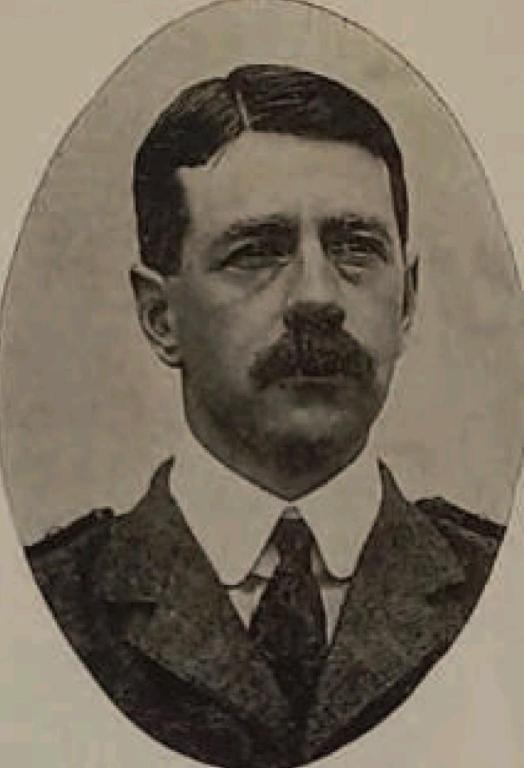
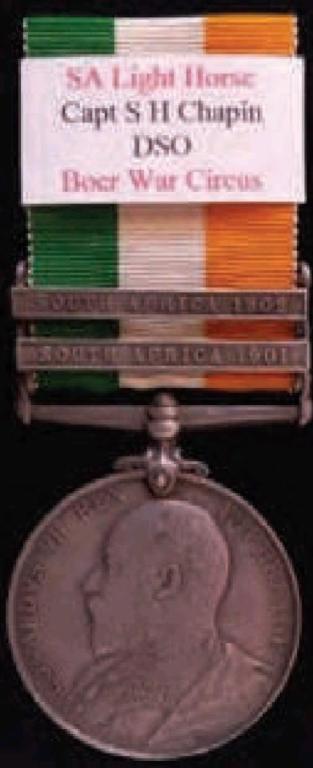

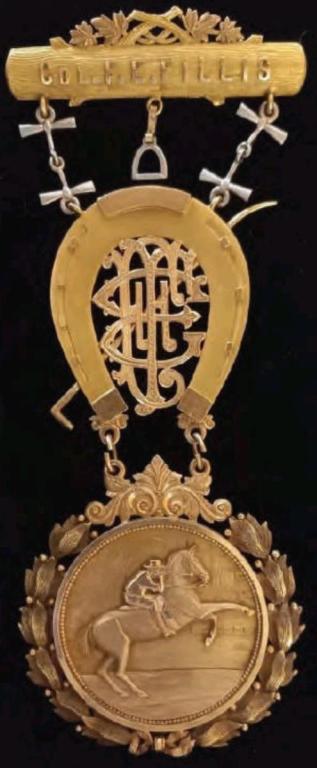
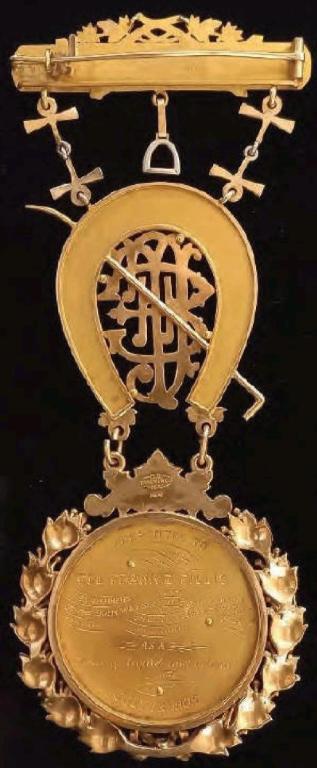
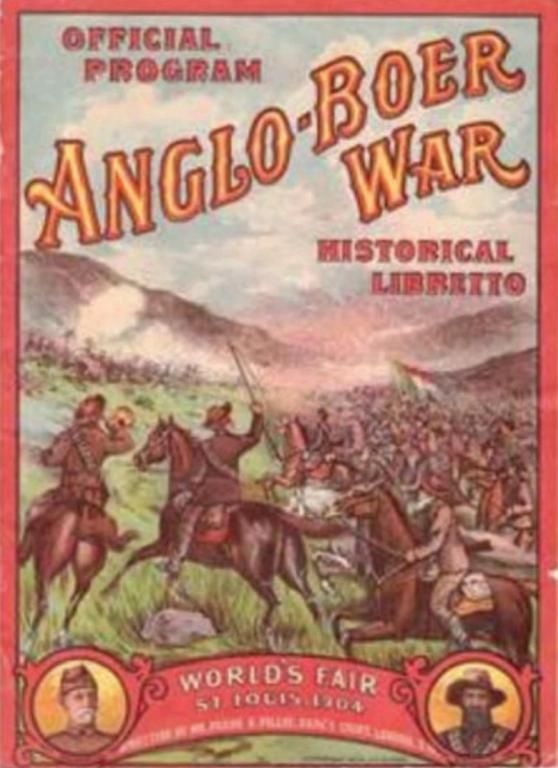
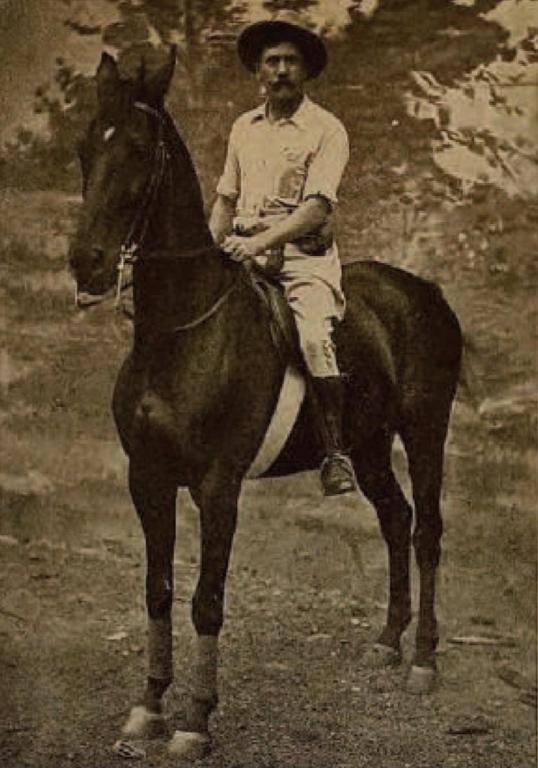

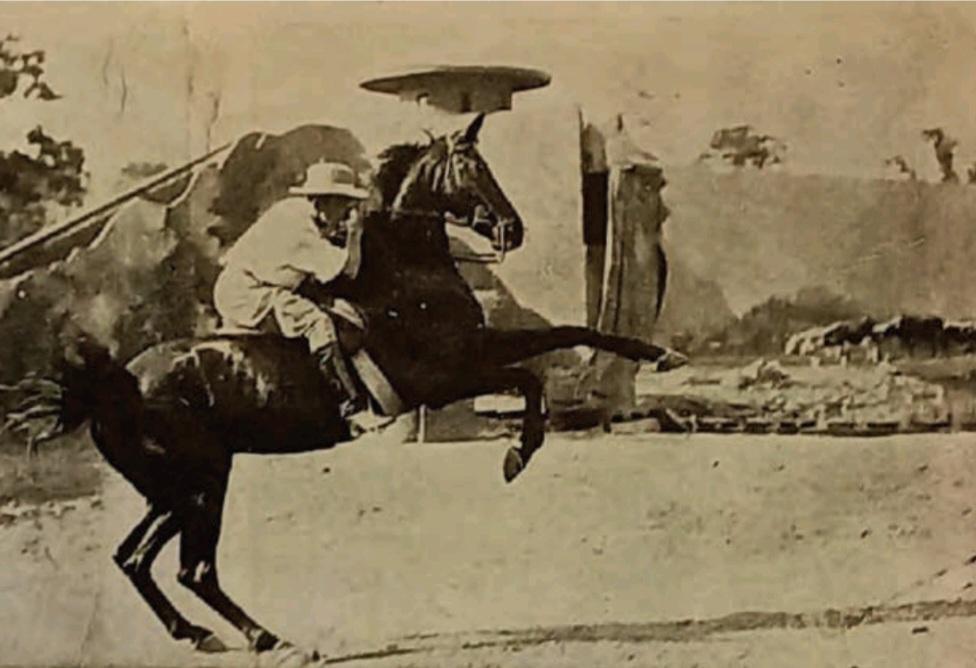
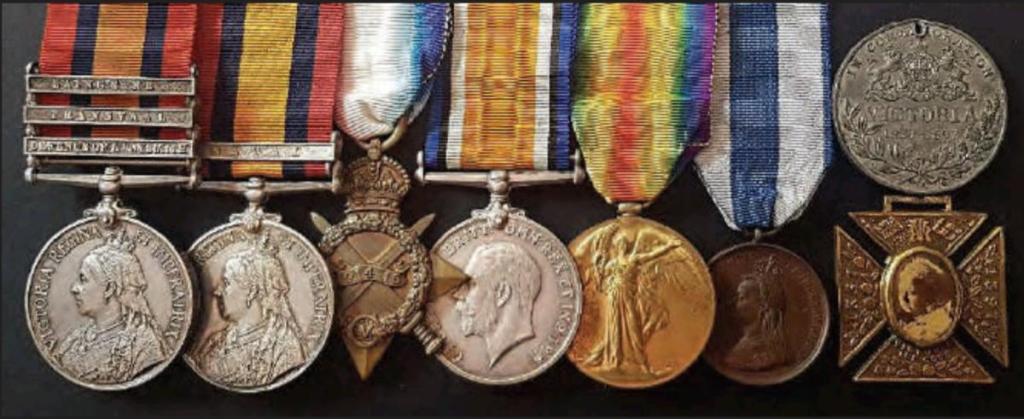
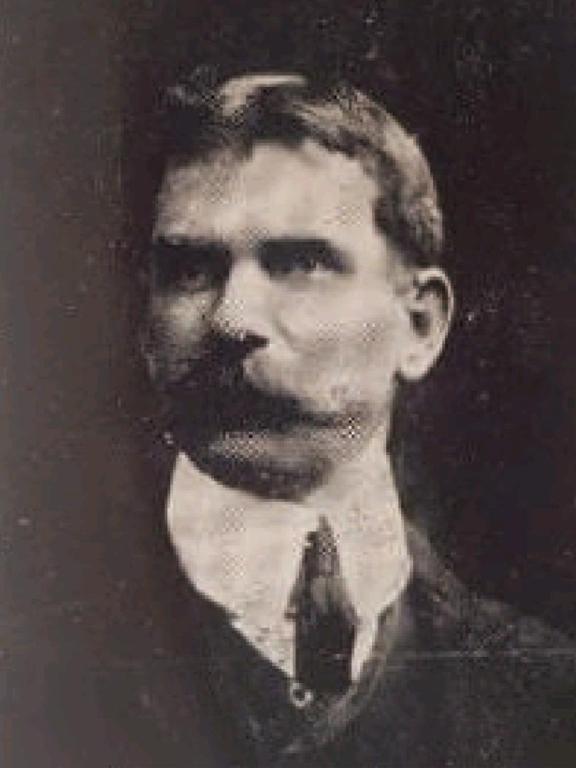
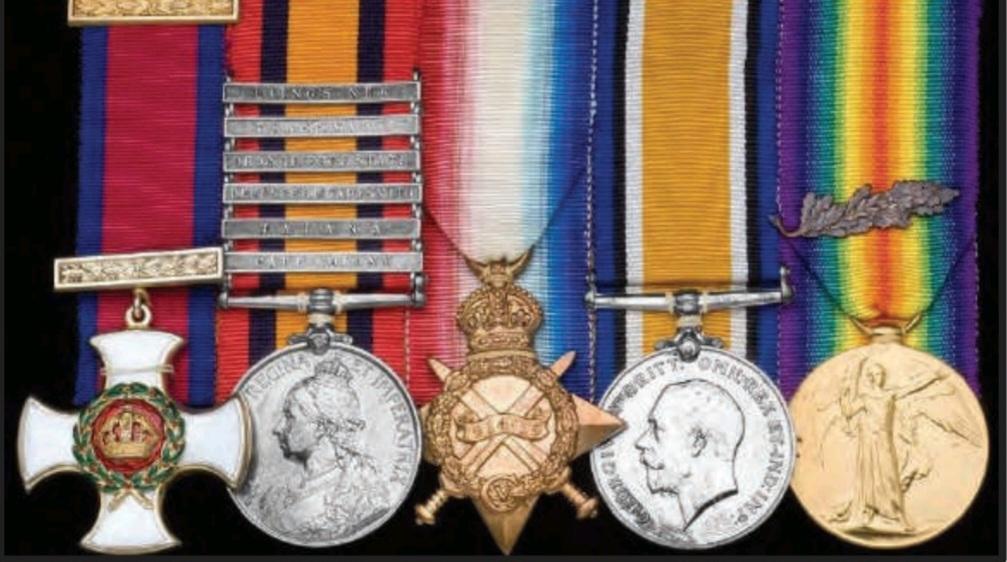
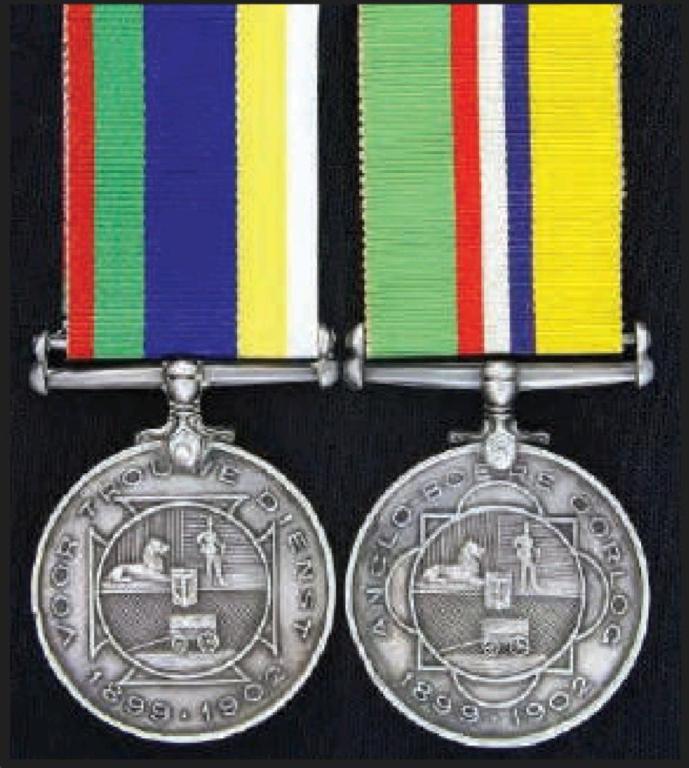

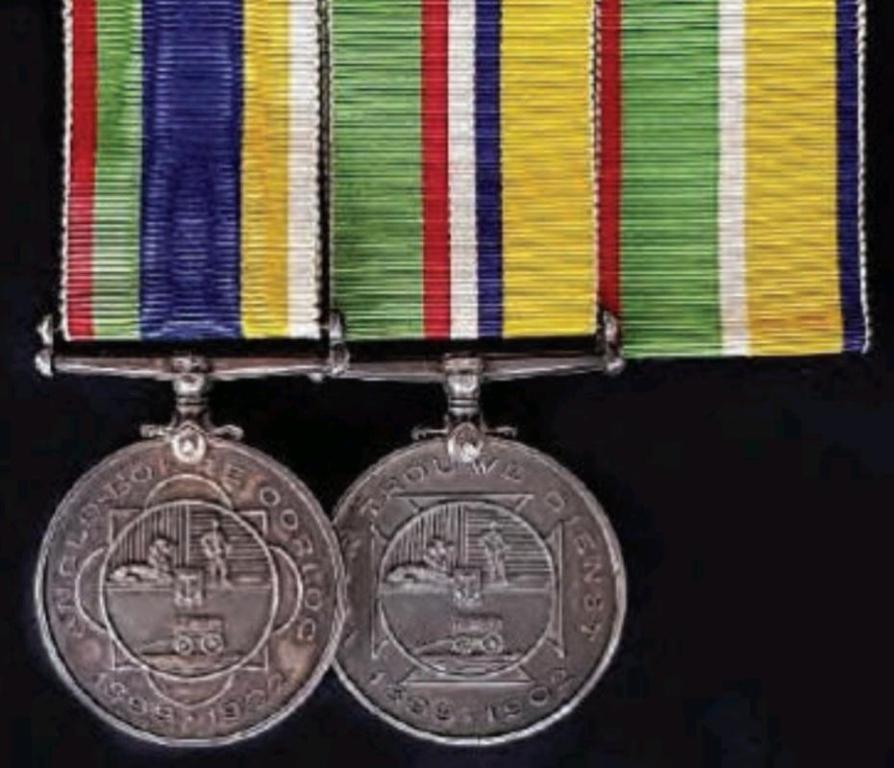
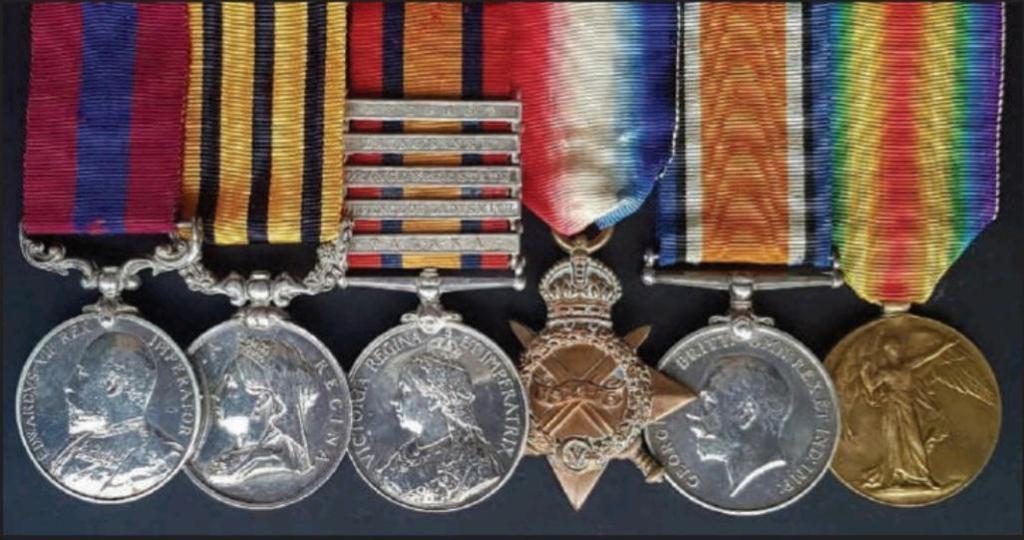
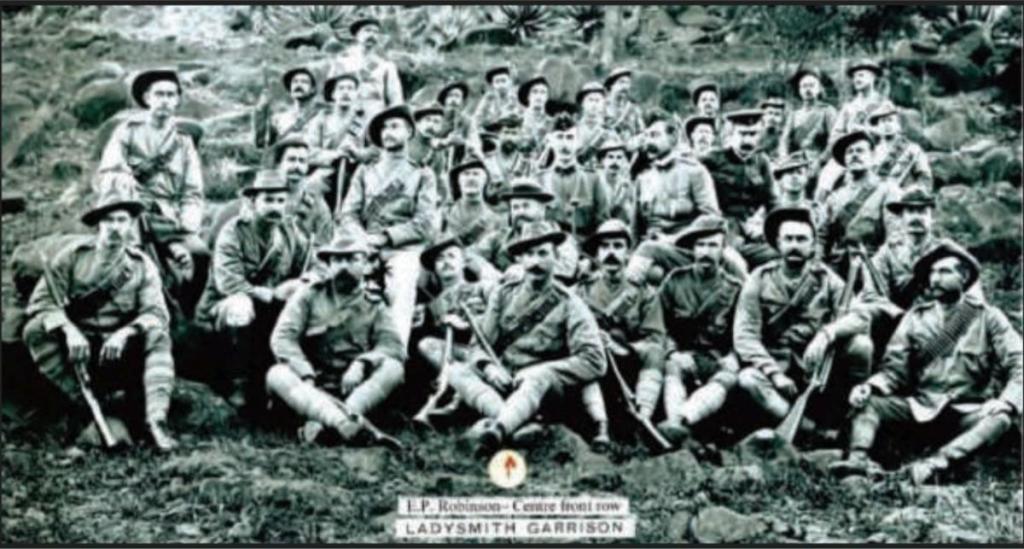

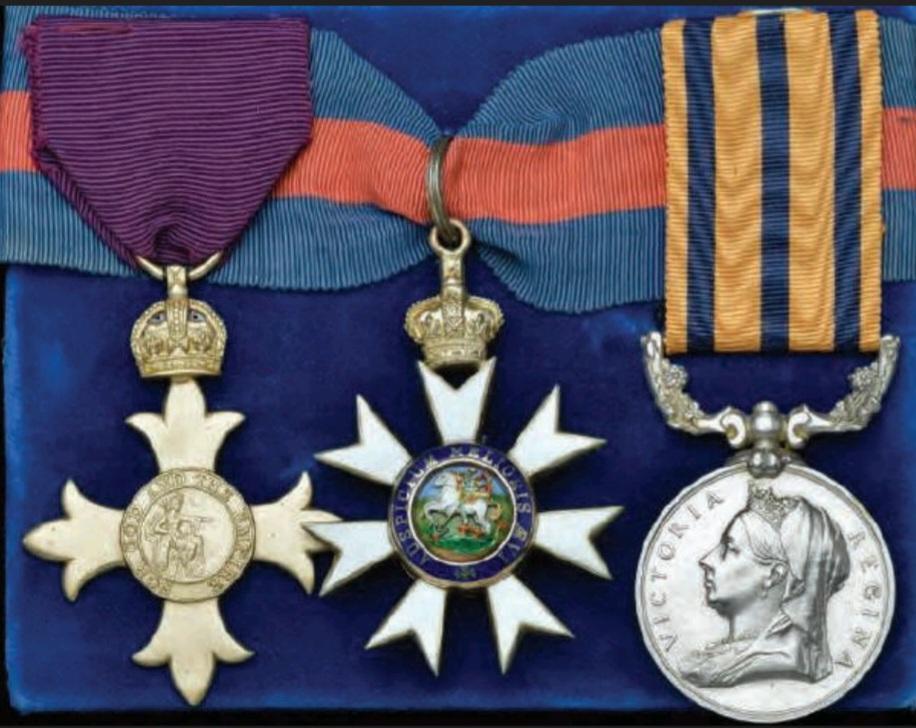
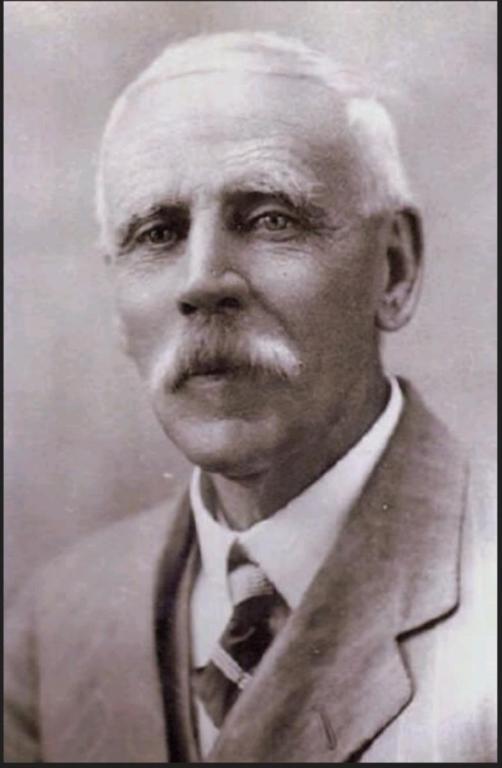
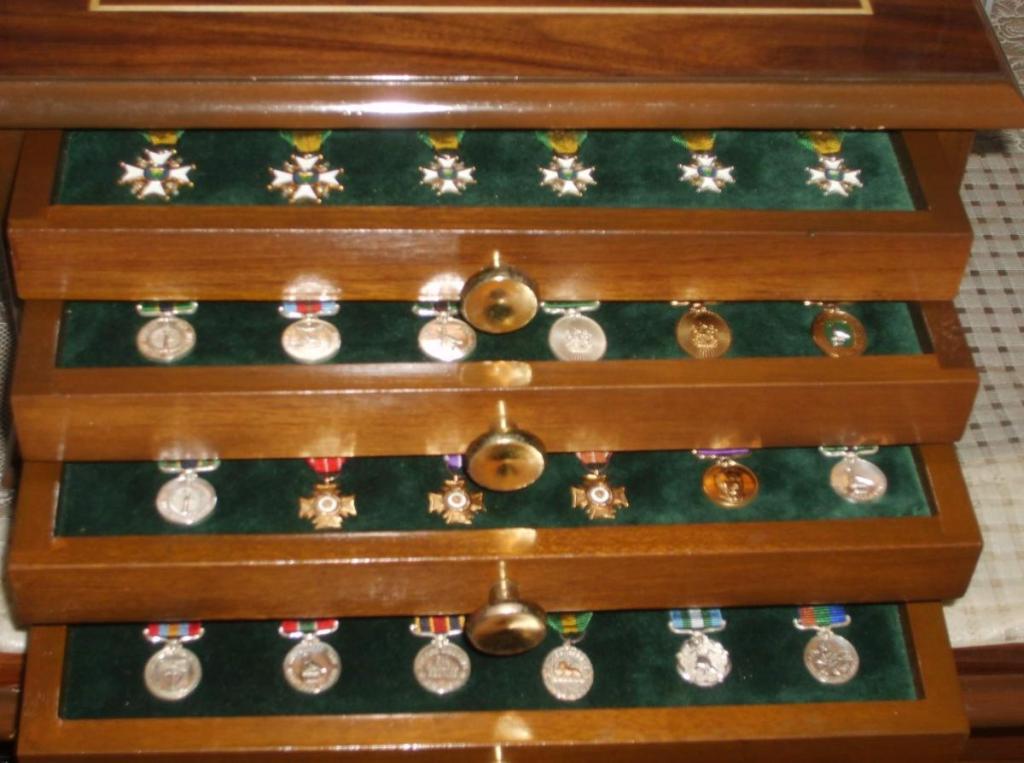
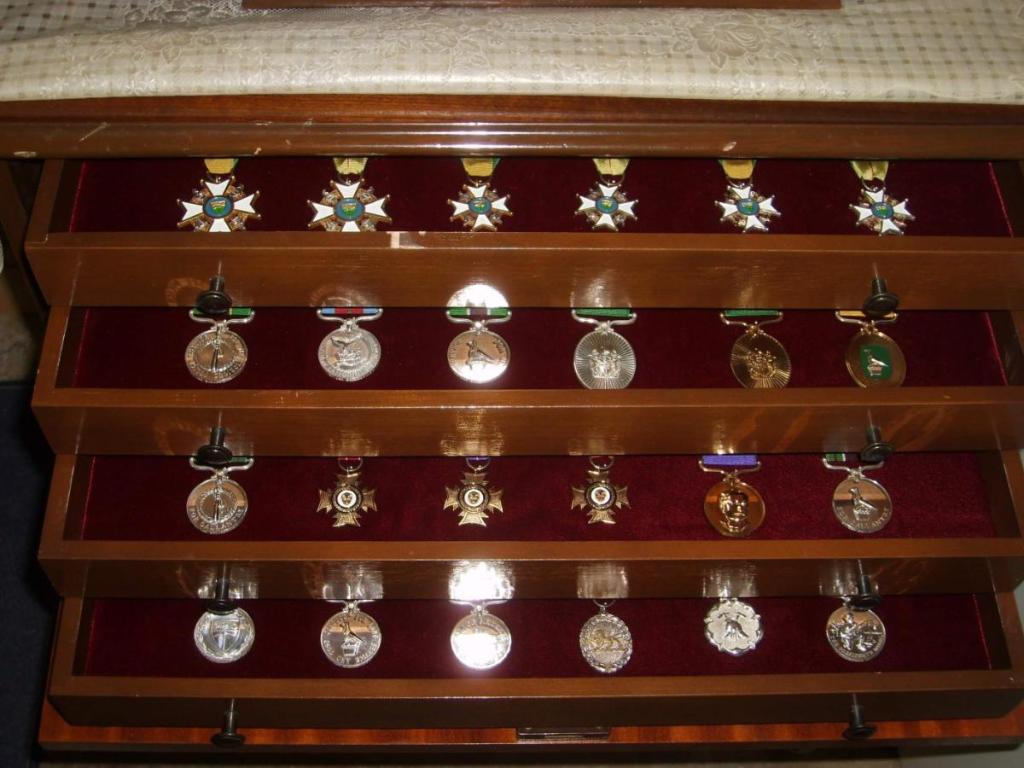

.thumb.jpg.4395f1ccaea4a276ae7e5085039ca68d.jpg)
.jpg.561f4ff56f863cebd2179e6ac2dc4bdb.jpg)
(1).jpg.de6859a74d71a4f2c0af58d7650d6b5c.jpg)
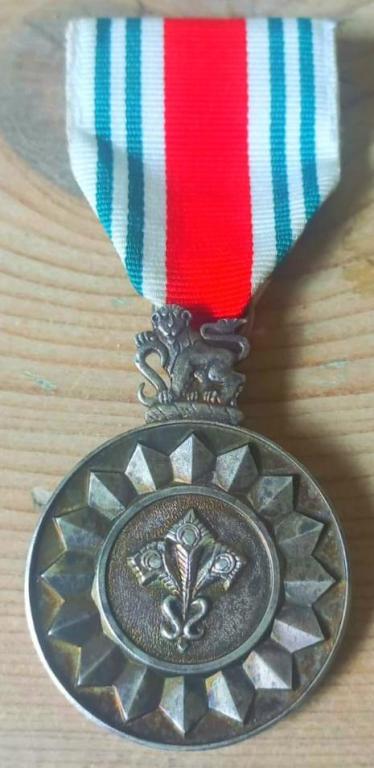
.thumb.jpg.88db8802dce7d22751f8966c0edeb7c4.jpg)
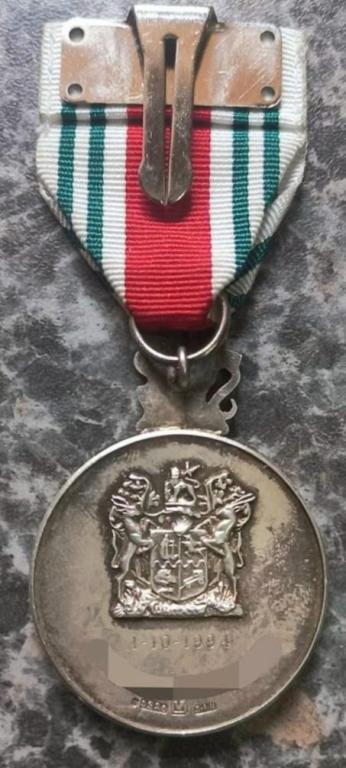
.thumb.jpg.5b9923720912ce6b301844fe83d37955.jpg)
.jpg.1bbf06e9648a004e6221f05b90863560.jpg)
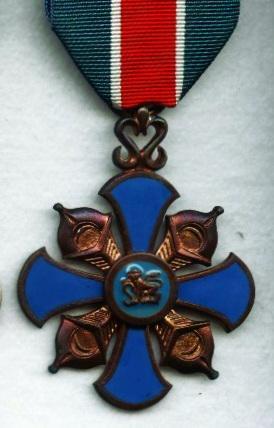
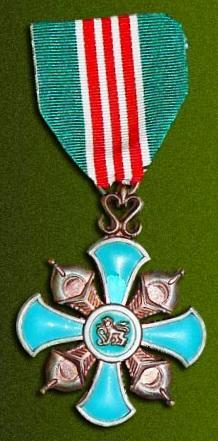
.jpg.54a3e150ad8fc67bb1482b362d3769fc.jpg)
(1).jpg.773899338d759c334d7390dba9a379cc.jpg)
.jpg.e02cf4c1a5c8a5b3c47930f4df1b5f0e.jpg)
(1).jpg.da537a64668fc772b3cf71514916411a.jpg)